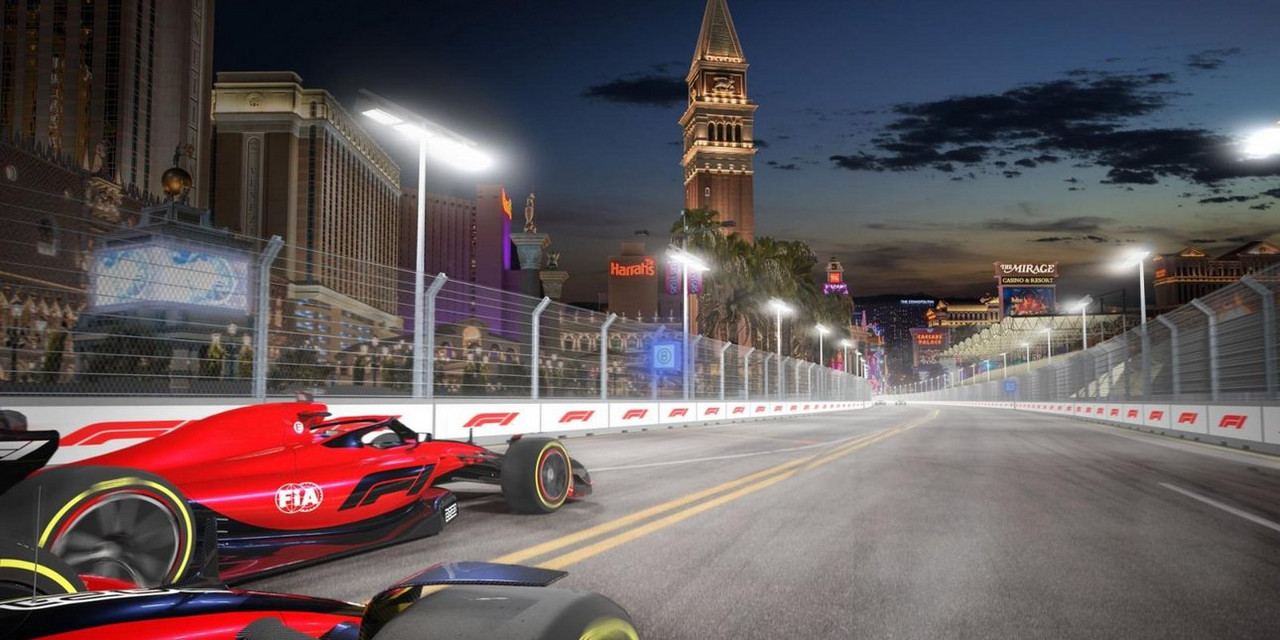Over the nearly 75-year history of Formula 1, there have been 11 circuits to host a Grand Prix in the United States, with the new Las Vegas Strip circuit making that 12 circuits by the end of this season.
This is by far the most different venues to host F1 in a single country, with second on the list belonging to France, with seven other locations throughout the country.
The first Formula 1 event hosted in the USA was the Indy 500, which had its' place on the calendar from 1950-60.
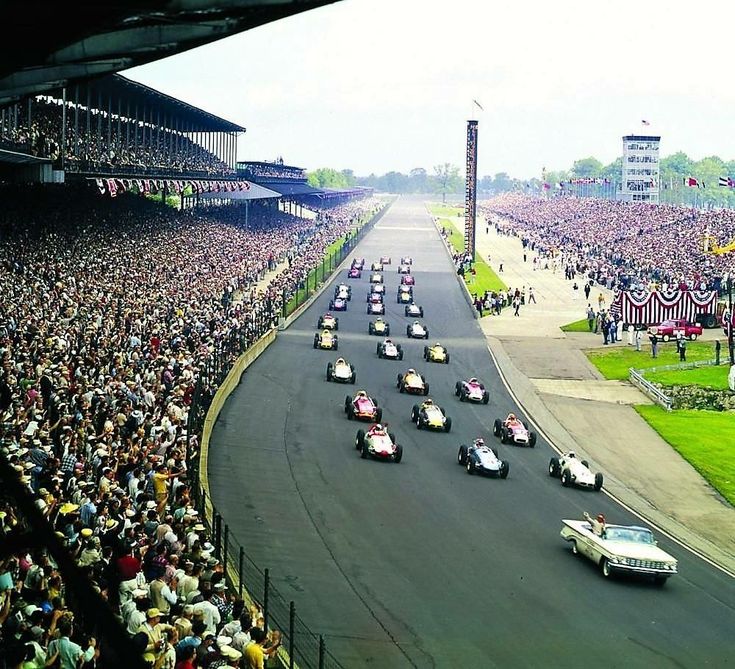
Picture source: Wayne Thomas via Pinterest
Indianapolis Oval (1950-1960)
The Brickyard appeared on the calendar was because, in the first few seasons of F1 during the 50s, no races were held outside of Europe.
Thus, the FIA felt they needed to include Indianapolis on the schedule because otherwise, they couldn't call their championship a 'World Championship'.
However, problems arose from including the 'Fastest Race on Earth', as although it was an F1 event, F1 cars were not eligible to drive in the race.
Therefore, there was minimal crossover between F1 and Indy, despite it being a round of the championship.
The only notable F1 drivers to attempt the race in this era were Alberto Ascari in 1952, Giuseppe Farina in 1956 and Juan Manuel Fangio in 1958.
Thus, with these problems and the fact that Indy competitors were considered anomalies in the record books, the Indy 500 was removed from the calendar post-1960.
Ironically, after the race left the calendar, several F1 drivers attempted the race, and 12 ex-F1 competitors won.
Moving onto the other circuits that hosted F1 in America, Sebring and Riverside hosted their only races in 1959 and 1960, respectively.

Picture source: Motorsport Images
Sebring and Riverside (1959 and 1960)
Bruce McLaren won the Sebring race driving a Cooper, his first win in F1, meanwhile the 1959 Indy 500 winner Rodger Ward entered a sprint car normally used in dirt track racing into the race.
He believed it was faster in the corners than the European's equipment, but was clearly mistaken as he qualified 43 seconds off pole position, then retired from the race due to clutch failure.
When the race switched to the Riverside in 1960, Stirling Moss took pole and the race win, it was only low crowd numbers that stopped the race becoming a regular feature on the F1 calendar.
Then, in 1961, the US Grand Prix moved to Watkins Glen, where it would stay until 1980.
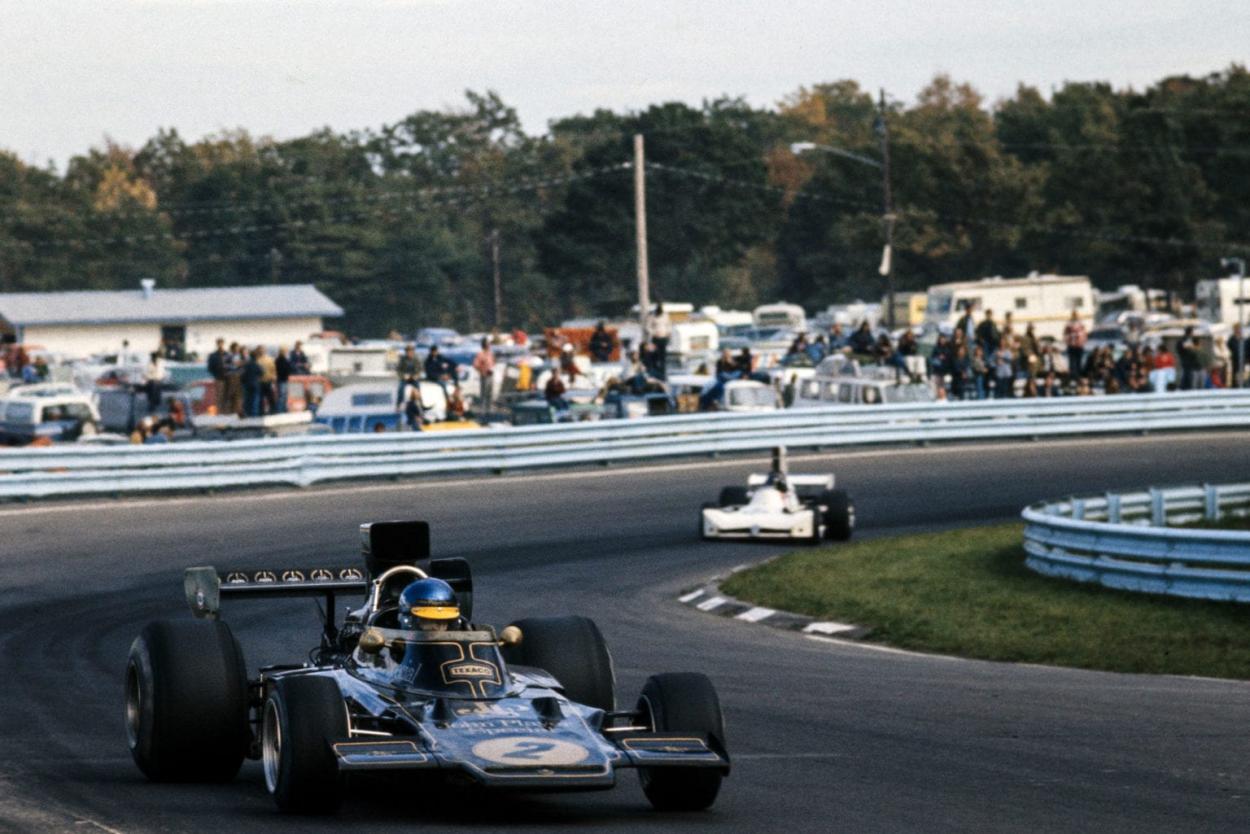
Photo Source: Motorsport Images
Watkins Glen (1961-1980)
The circuit often hosted the season finale in this era, with drivers' titles confirmed in 1970, 1974 and 1977.
The Glen's 20 season appearance on the calendar is the longest consecutive stretch in history for an F1 race in the United States, to this day no race has more than 12 consecutive races.
Towards the end of Watkins Glen's tenure, there was a second F1 race held in the USA starting in 1976
Long Beach is now an IndyCar track, but it hosted F1 races on three different layouts.
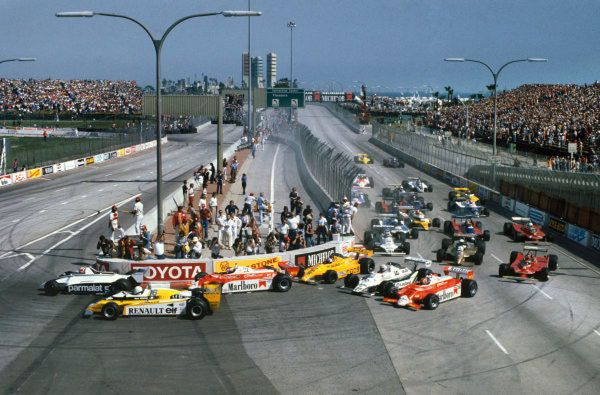
Photo Source: Media Storehouse via Pinterest
Long Beach (1976-1983)
It was a tight street circuit that produced many crashes, and Clay Regazzoni became paralysed from the waist down after a crash there in 1980.
When Watkins Glen fell off the calendar after 1980, F1 wanted a second American race to go alongside Long Beach to try and get the country interested in F1.
In 1981, a new circuit was revealed in Las Vegas, and the race would be known as the 'Caesars Palace Grand Prix'.
This was because the circuit was built inside the Caesars Palace casino car park, on a track widely believed to be the worst in F1 history.
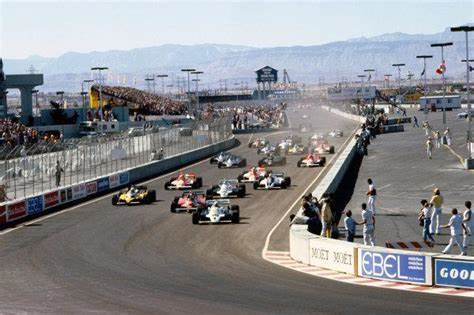
Photo Source: Reddit user snekba on r/formula1
Caesars Palace (1981-82)
It was flat featureless, and the designers had a real problem making the track long enough to host a race, however they came up with an ingenious idea.
They made a track layout that resembled a letter 'E' shape, as it constantly turned back on itself with hairpins separated by short straights with kinks in them.
Therefore, the racing was highly processional in 1981, which was a pity because this track hosted the season finale that year, providing an anti-climax to a three-way title fight.
Long Beach and Caesars Palace remained on the calendar for 1982 and were joined by a third American race on a street circuit in Detroit.
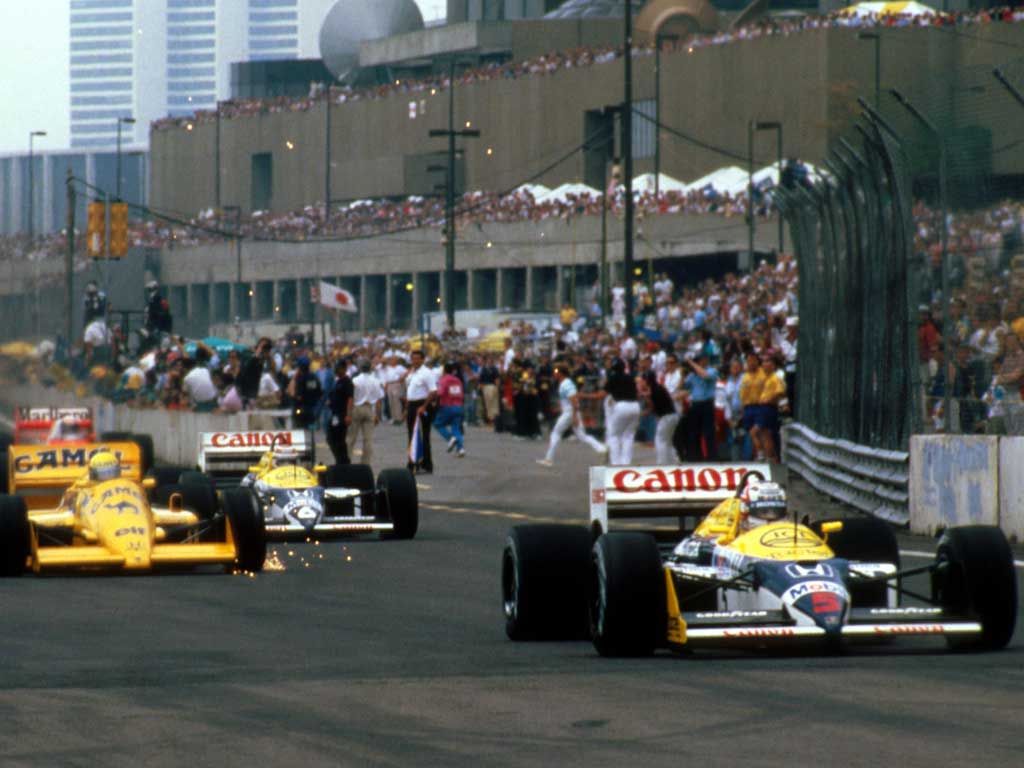
Photo Source: Imgur via Pinterest
Detroit (1982-1988) and Dallas (1984)
This marked the first time a country hosted 3 Formula One races in the same year, a statistic that will be repeated in 2023.
The Caesars Palace race again provided an anticlimactic end to the 1982 season, one of the craziest seasons in F1 history, so it was unceremoniously booted off the calendar for 1983.
On a separate note I actually did a video on the 1982 F1 season and its crazy nature so if you'd like some more F1 content, here it is:
Anyway, Detroit and Long Beach would only be on the F1 calendar together as the only American races once however, as the owners of the Long Beach race shifted focus away from F1 and towards IndyCar.
Thus, for 1984, Dallas joined Detroit on the calendar however it only lasted one year, because the track was ill-suited to Grand Prix racing.
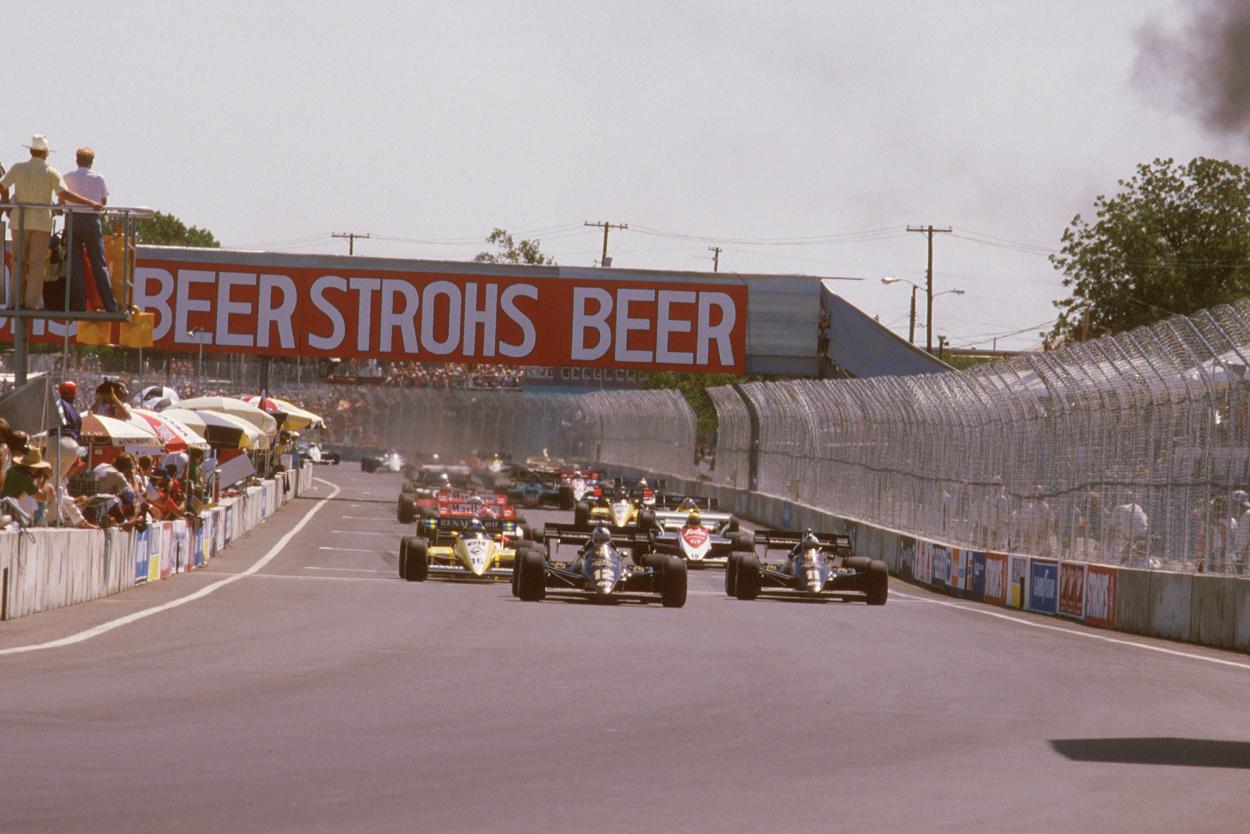
Photo Source: Motorsport Images
Hot temperatures of 38 degrees Celsius or 100 degrees Fahrenheit caused the track surface to break apart, and repair work had to be undertaken throughout the weekend to ensure safety.
However there was still resurfacing efforts going on until half an hour before the race started, and it wasn't enough as the track surface broke up again and 12 drivers retired during the race after spinning off.
The removal of Dallas from the schedule left Detroit as the only American race on the F1 calendar, until 1988 when a hot race there caused similar track breakup issues to Dallas.
Thus the track was taken off the calendar and replaced with another street circuit, this time in Phoenix, Arizona.

Photo source: Motorsport Images
Phoenix (1989-1991)
This circuit's short tenure from 1989-91 is most well known for Ayrton Senna and Jean Alesi's battle here in 1990.
However low crowd attendances forced Phoenix off the F1 calendar, and this meant for 1992 there would be no American race on the F1 calendar for the first time in history.
F1 took an eight season hiatus from the United States from 1992-99, then in 2000 a race was held on the newly constructed road course at the Indianapolis Motor Speedway.
The races held at IMS from 2000 to 2007 were sometimes marred with controversy.

Photo Source: Jan Filart via WordPress
Indianapolis Road Course (2000-2007)
In 2002 after he had taken the win away from his teammate earlier on in the season, Michael Schumacher gave Rubens Barrichello the win at Indy to pay him back.
The team orders controversy wasn't the one to put the nail in the coffin for F1 at Indianapolis however, that would come in 2005.
A tyre scandal led to only six cars starting the 2005 US GP, as the others had to pull into the pits after the formation lap and retire due to safety concerns.
Fans booed and threw beer cans and bottles on the track in frustration at only seeing a six car race.
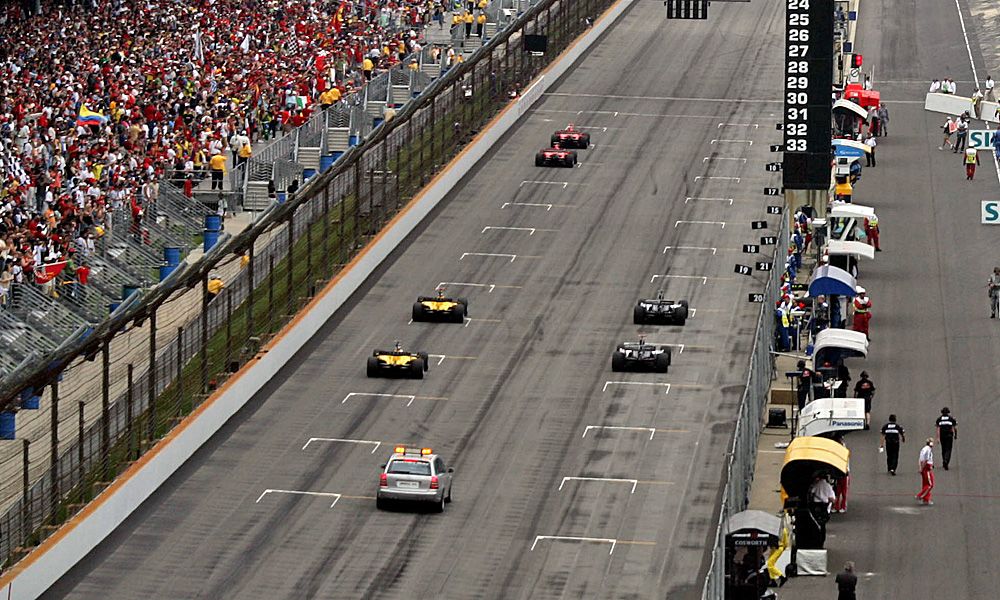
Photo source: f1i.com
Despite Michelin giving 20,000 fans that attended the 2005 race free tickets for 2006, the race was canned after 2007 probably due to damaged reputation following the several controversies.
This left F1 without an American race again, until 2012 when they went to Circuit of the Americas in Texas for the first time.
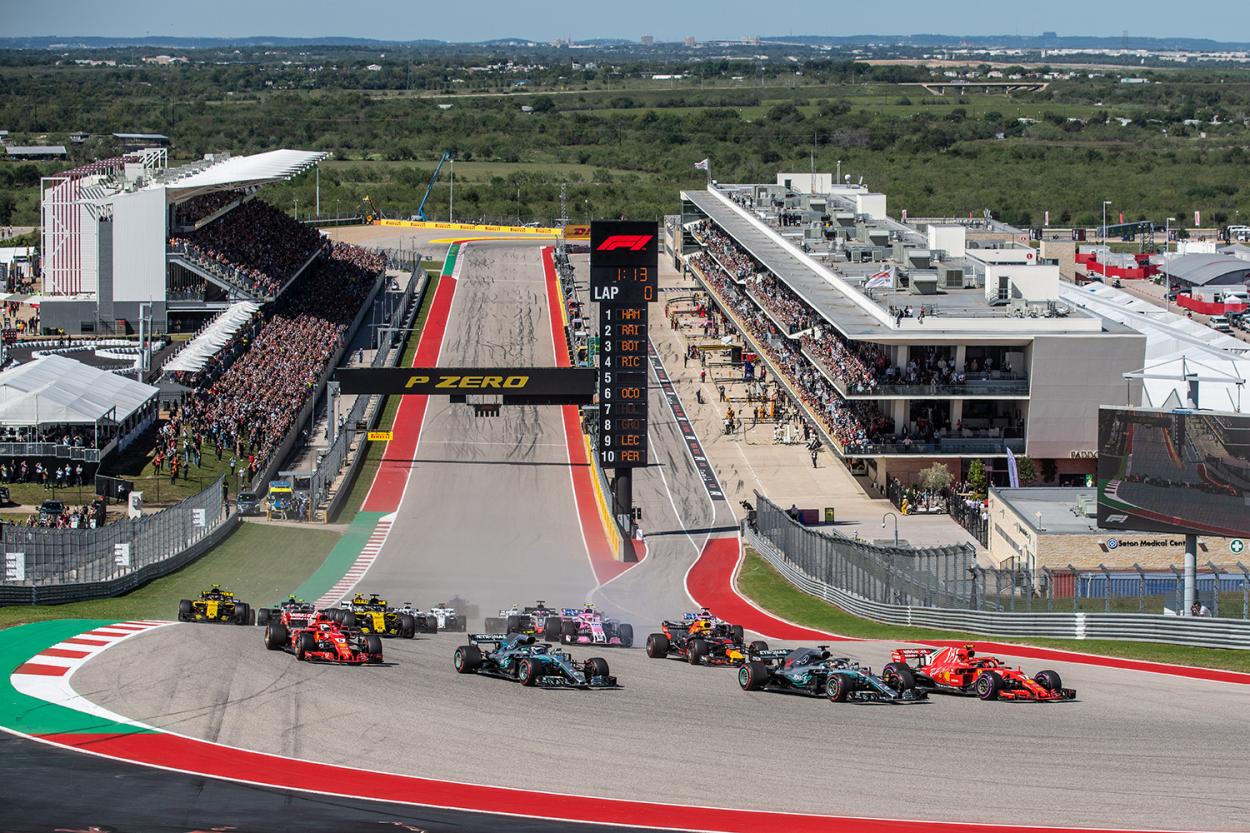
Photo source: fantasygp.com
Circuit of the Americas (2012-present)
This circuit has its fair share of critics and fans alike, and remains on the calendar in the present day, despite rumours it may disappear.
It has hosted many great races, in 2012, 2015, 2018 and 2021, but there are still more tracks to discuss.
With the recent F1 boom in the USA due to the Drive to Survive Netflix series, in 2022 F1 expanded to two races in the country for the first time since 1984.
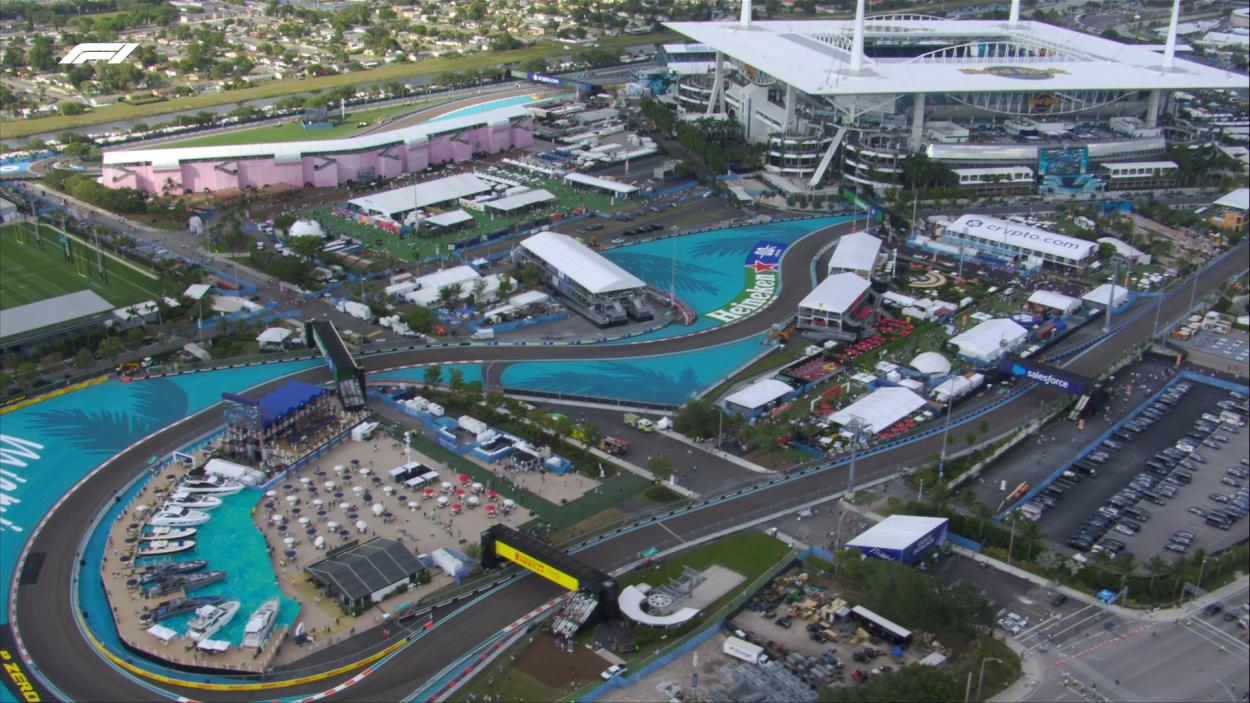
Photo source: formulaspy.com
Miami (2022) and Las Vegas (2023)
Miami's introduction to the F1 calendar has mostly been labelled as a cash grab by fans, as it has produced sub-par racing and many people have been priced out of attending due to extortionate ticket prices.
Many fans have called to go to other legendary venues to host the US Grand Prix, however it seems that money rules in this business.
That brings us into the present day, where a race on the Las Vegas Strip will make it three races on the calendar in the USA, as we come full circle after several decades of underrepresentation, will F1 finally catch on in the USA, or will Vegas, Miami and COTA fall by the wayside?
We won't know until we see if F1's American fanbase sticks around as we enter another era of dominance, a problem which has led to many fans become turned off the sport in the recent past of F1.

